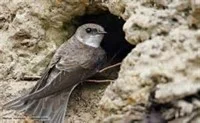As I write this article, the Beast from the East is looming large in my mind and on weather forecasts; it would seem that as we head in to meteorological spring, winter is not finished with us yet as bitter easterly winds are set to bring snow to make life more difficult for people and wildlife. I’ve already seen my first hoverfly of the year, basking in sunshine and feeding on snowdrops at the end of February. It was probably a common drone fly, whose larvae are known as rat-tailed maggots, with the distinctive long breathing tube giving them their rather unpleasant name and also enabling them to survive polluted water with low oxygen levels. I’m sure nature is used to the vagaries of the British climate so I hope my hoverfly has tucked itself away somewhere sheltered to wait out the worst of the weather.
Depending on how long winter holds us in its grip, March is usually an exciting month when insects emerge from hibernation and the range of local bird species slowly changes as winter migrants leave and summer visitors arrive. Winter visiting bird species such as the tough little sanderling will soon depart for their breeding grounds up in the Arctic tundra while species which stay in the UK all year such as the elegant curlew and feisty redshank will begin to move further up the Tees Valley and on to the higher grasslands and moors to raise their broods. Curlews in particular are really struggling at the moment with a number of studies taking place to try and understand why. It would be a sad day when the lower Tees didn’t lift to the haunting sound of a flock of curlew lifting up in to the air; RSPB Saltholme is a great place to see them feeding on the grassy fields alongside flocks of spangled golden plover and acrobatic lapwing.
It may seem foolish to think of summer visiting birds arriving on Teesside while we shiver in sub-zero temperatures but depending on what the weather throws at us, by the end of March we can usually expect to see or hear the first migrants at the Tees Barrage, namely the aerial insect hunting sand martin and the chiffchaff, a warbler species. Sand martins nest in a small colony in the eroding riverbank downstream of the barrage and may one day move over to the artificial sand martin bank installed a couple of years ago on the Portrack Marsh Nature Reserve by Tees Valley Wildlife Trust volunteers and staff; it would be lovely to see this being used this season. There are other colonies along the Tees, a large one being spotted a couple of springs ago along the Tees between Low and High Coniscliffe. As we stood and watched in awe, it felt as though we were in the middle of a blizzard of birds as they chattered and flew around us, a real privilege to experience.
The other early spring arrival, the chiffchaff, has a very easy call to pick up, a two tone repetition of its name which is wonderful to hear for the first time after such a long winter. Some chiffchaffs overwinter in the UK, together with blackcaps, another insect eating warbler that usually migrates south in the autumn. The overwintering blackcaps have been shown to be European birds which originally seem to have taken the wrong migration route but since have discovered the well-stocked bird tables of the UK and adapted to feeding in gardens, enabling them to survive the winters before migrating back to their European breeding grounds. The ability of nature to respond to new opportunities never fails to surprise and humble me.



